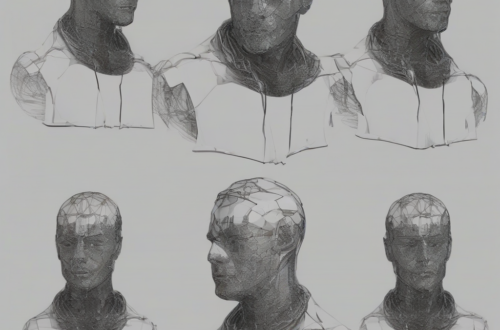Standard Pest Control: A Comprehensive Guide to Protecting Your Home and Business
Pest control is an essential aspect of maintaining a healthy and safe environment, whether it’s your home, business, or any other structure. Dealing with pests can be a frustrating and potentially dangerous experience, but with proper knowledge and preventative measures, you can effectively manage and eliminate pest infestations.
This guide will provide a comprehensive overview of standard pest control practices, covering a range of topics, including:
- Understanding Common Pests
- Identifying Pest Infestations
- Preventative Measures
- Pest Control Methods
- Professional Pest Control Services
- Safety Precautions
Understanding Common Pests
Before delving into pest control strategies, it’s crucial to understand the types of pests you might encounter. Common household pests include:
- Ants: These social insects are known for their ability to form colonies and invade homes in search of food and water.
- Cockroaches: These nocturnal insects are notorious for their adaptability and resilience, often thriving in warm, humid environments.
- Termites: These wood-destroying insects can cause significant structural damage to buildings, feeding on cellulose.
- Rodents: Rats and mice are common household pests that can spread diseases and contaminate food.
- Spiders: While most spiders are harmless, some species, like black widow and brown recluse spiders, can pose a threat with their venomous bites.
- Bed Bugs: These tiny parasitic insects feed on human blood and are known for their ability to hide in mattresses and other bedding.
- Fleas: These blood-sucking parasites are primarily associated with pets but can also infest human dwellings.
- Mosquitoes: These flying insects can spread diseases like West Nile virus and Zika virus through their bites.
Identifying Pest Infestations
Early detection is crucial for effective pest control. Keep an eye out for signs of infestation, including:
- Sightings: Seeing pests in your home or business is the most obvious sign of an infestation.
- Droppings: Pests leave behind droppings that can be found in areas where they frequent.
- Nests: Many pests build nests to house their colonies, which can be found in attics, crawl spaces, or other secluded areas.
- Damage: Pests can cause damage to furniture, walls, and other structures, leaving behind chew marks or holes.
- Odors: Some pests, such as cockroaches and termites, emit a distinct odor that can indicate their presence.
Preventative Measures
Prevention is key to keeping pests away from your home or business. Here are some effective preventative measures:
- Seal Entry Points: Inspect your home for cracks, holes, or other entry points that pests can use to gain access.
- Cleanliness: Regularly clean up spills, crumbs, and other food sources that attract pests.
- Storage: Store food in airtight containers and dispose of garbage regularly.
- Moisture Control: Address any leaks or moisture problems that can create a breeding ground for pests.
- Landscaping: Keep vegetation trimmed away from your home’s foundation and avoid creating a haven for pests.
- Regular Inspections: Conduct regular inspections of your home or business to identify potential pest problems early on.
Pest Control Methods
Various pest control methods are available, ranging from simple DIY solutions to professional services. Some common methods include:
- Traps: Sticky traps, glue traps, and snap traps are effective for catching rodents, insects, and other pests.
- Baiting: Baits containing insecticides or rodenticides can attract and kill pests.
- Sprays: Insecticides can be sprayed directly on pests or applied to areas where they are commonly found.
- Dusting: Insecticidal dusts can be applied to cracks and crevices where pests may hide.
- Fumigation: Fumigation is a more intensive method that uses gas to eliminate pests in enclosed spaces.
- Heat Treatment: Heat treatment involves raising the temperature of a space to a level that is lethal to pests.
Professional Pest Control Services
For complex or persistent infestations, it’s best to seek professional pest control services. Licensed pest control professionals have the expertise and tools to effectively eliminate pests and prevent future infestations.
- Inspection: A professional pest control technician will conduct a thorough inspection of your home or business to identify the type of pest and the extent of the infestation.
- Treatment Plan: Based on the inspection, the technician will develop a customized treatment plan that addresses the specific needs of your situation.
- Safe and Effective Methods: Professional pest control services use safe and effective methods that are approved by regulatory agencies.
- Follow-up Services: Professionals can provide follow-up services to ensure that the infestation is completely eliminated and to prevent future outbreaks.
Safety Precautions
It’s essential to prioritize safety when dealing with pests and using pest control products.
- Read Labels: Always read and follow the instructions on the label of any pest control product before using it.
- Protective Gear: Wear gloves, masks, and other protective gear when handling pesticides or other pest control products.
- Ventilation: Ensure proper ventilation when using pest control products indoors.
- Children and Pets: Keep pest control products out of reach of children and pets.
- Storage: Store pest control products properly according to the manufacturer’s instructions.
Conclusion
Standard pest control practices are essential for maintaining a healthy and safe environment. By understanding common pests, taking preventative measures, and using appropriate methods, you can effectively manage and eliminate pest infestations. Remember to prioritize safety when handling pest control products and to consult with professionals when necessary.





